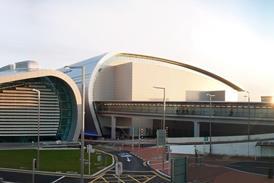The young light-sport aircraft class received a credibility boost last June when Cessna announced it had designed a proof-of-concept LSA. The assurance in July was that the company would decide by the first quarter 2007 whether or not to make the light two-seat craft, but months after that deadline the decision is not yet made.
"We're feeling more and more comfortable that we're getting the design solidified ... Now we're focusing on how to get it manufactured to be as cost-efficient as we can, and we hope to have that answer soon,” says chairman, president and chief executive Jack Pelton. "As a company, we aren't going to say 'yes' until we're able to offer actual orders guaranteeing a certain price and a certain delivery."
The light-sport category is in place in Australia, Colombia and the USA, while the European Aviation Safety Agency is drafting its own version, which Pelton says Cessna is tracking. "We are working with EAA, FAA and EASA to work on revamping the European rules for what the LSA should look like," he says, adding that sales potential will be aided by the synchronised regulations.
The category allows daytime flying only of light two-seat craft after only 20h of training. Pilots and even LSA manufacturers reacted with enthusiasm to Cessna's proof-of-concept, thrilled that Cessna's 70-year reputation would boost interest in their young category.
"We did very exhaustive voice-of-the-customer polling with our Cessna pilot centres and other people," Pelton says. At the LSA’s Oshkosh debut Cessna polled public reaction and suggestions.
"We've gotten some answers that caused us to go back and relook at some of our basic assumptions," Pelton says, but the company is guarding most details of the changes.
As of April it had undergone 78h of testing.
Lead project engineer Neal Willford says: “We’re evaluating the 100hp [0.75kW] Continental 0-200 engine and we have modified the nose cowl to fit the Continental engine."
Willford also designed the Next Generation Piston concept aircraft, which is powered by a normally aspirated 315hp Lycoming IO-580. The airframe has also been tweaked for engineering and aerodynamic changes. Pelton says the decision is firm on creating a new family of piston singles.
Source: Flight Daily News























